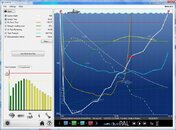Our nitrox class includes sections on the definition of nitrox, history of it, review of basic diving physics, review of gas laws, advantages and concerns, review of oxygen toxicity, nitrox dive planning that includes O2 exposure calculations, MOD's, best mix for the dives, and EAD's. We cover switching mixes between dives, blending methods, and an explanation of what O2 cleaning is and when it is called for and on what gear. Something that seems to be missing in some courses based on questions that pop up here on the board from new divers needing to know if their BC needs to be O2 clean. We also have the analysis and SEI still requires two dives using nitrox that are supposed to be planned from beginning to end using what was just learned.
Ie say a dive using nitrox to 115 ft on a wreck that sits in 125 feet of water. We know 32 is out since the MOD is 111 for that. So what is the best mix for this dive? How long do we plan on being down? How many dives that day are planned using nitrox and will we use the same mix for subsequent dives or switch because they will be shallower? What is our own acceptable PPO2 for the bottom? 1.4, 1.3, or maybe 1.2? Where we are partial pressure blending is pretty much a given and the shops will mix custom blends. One training lake is 125- 130 feet deep, I never use anything richer than 28% there as I might want to do the bottom. Where do we want to be on our CNS clock? All of this is part of the plan as well as the standard dive planning that we would do if using air.
We also include mandatory decompression times on 32 and 36 mixes just as we do with air in the OW class.
The deco tables are a bit liberal for me but that is just because I have my own more conservative personal limits due to my age, overall physical condition, and peace of mind from my helitrox training but it is still under 1.6. I prefer a max of 1.5 for deco and 1.3 for the working portion and I explain why to my students.
In addition I reiterate safe diving practices, buddy skills, and rescue of a toxing diver.






